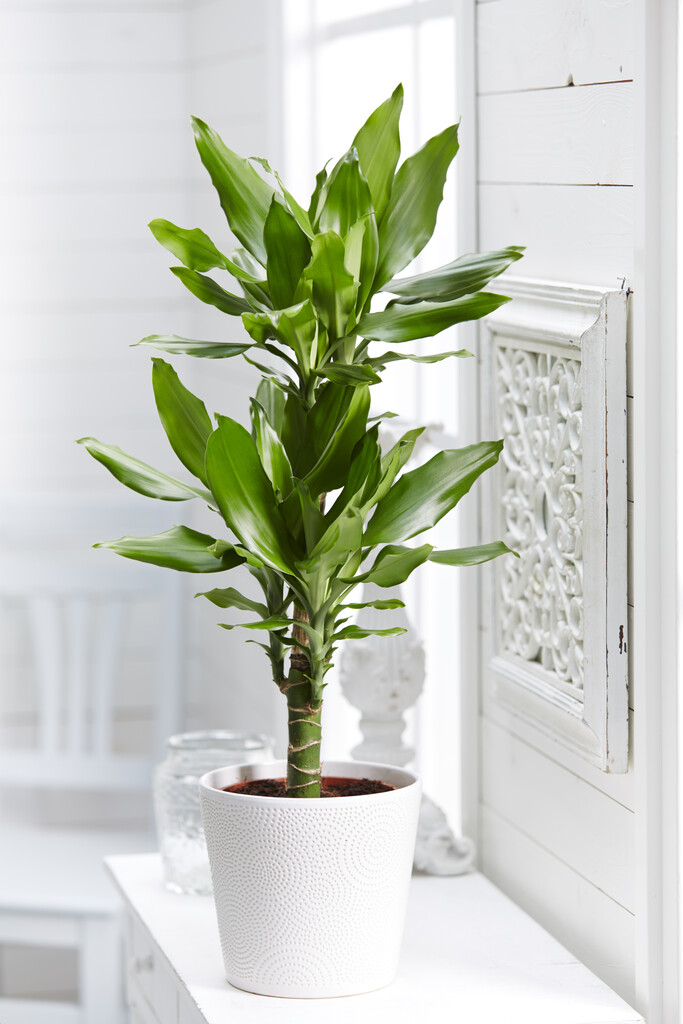Dracaena steudneri
northern large-leaved dragon tree
A slow-growing, tropical evergreen shrub or tree, with upright, palm-like stems, reaching up to 15m high in its native range but usually much smaller in cultivation. Leaves are leathery, lance-shaped and clustered at the tips of the stems, and can grow to be over 1m long. Mature plants sometimes produce long clusters of small, scented greenish-white flowers, which open at night, and are followed by round, dark purple-black berries
Size
Ultimate height
4–8 metresTime to ultimate height
10–20 yearsUltimate spread
2.5–4 metresGrowing conditions
Moisture
Moist but well–drainedpH
Acid, Alkaline, NeutralColour & scent
| Stem | Flower | Foliage | Fruit | |
| Spring | Green | |||
|---|---|---|---|---|
| Summer | White Green | Green | ||
| Autumn | Green | Purple Black | ||
| Winter | Green |
Position
- Full sun
- Partial shade
Aspect
East–facing or South–facing or West–facing
Exposure
Exposed or Sheltered Hardiness
H1BBotanical details
- Family
- Asparagaceae
- Native to GB / Ireland
- No
- Foliage
- Evergreen
- Habit
- Columnar upright
- Potentially harmful
- Pets (dogs, cats, rabbits, rodents): Harmful if eaten. For further information and contact numbers regarding pets, see the HTA guide to potentially harmful plants
- Genus
Dracaena are evergreen trees, the few branches bearing linear to lance-shaped leaves often crowded towards the tips; on mature plants, small greenish-white flowers may be followed by orange or red berries
- Name status
Unresolved
How to grow
Cultivation
Grow in a moist but free-draining potting mix, in full sun. Plants will not tolerate frost, and are usually grown as houseplants, in a greenhouse or in containers that can be moved indoors over winter. Water moderately in the growing season, preferably with rainwater, and apply a balanced liquid feed monthly. Keep almost dry in winter. See Dracaena and houseplant cultivation for further advice
Propagation
Propagate by seed, sown at 18-20°C in spring, or by semi-ripe cuttings in late spring to early summer; bottom heat may be required for rooting
Suggested planting locations and garden types
- Architectural
- Houseplants
- Low Maintenance
- Conservatory and greenhouse
Pruning
No pruning required
Pests
May be susceptible to scale insects, glasshouse red spider mite, thrips and mealybugs
Diseases
Generally disease-free
Get involved
The Royal Horticultural Society is the UK’s leading gardening charity. We aim to enrich everyone’s life through plants, and make the UK a greener and more beautiful place.
